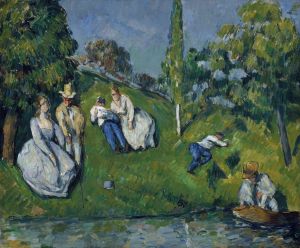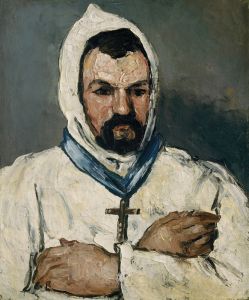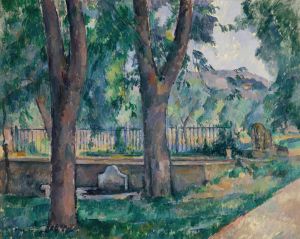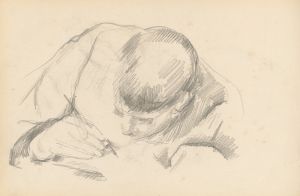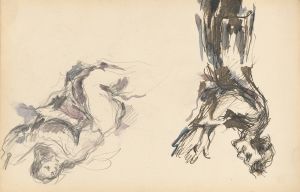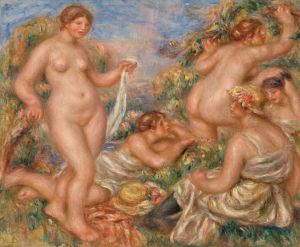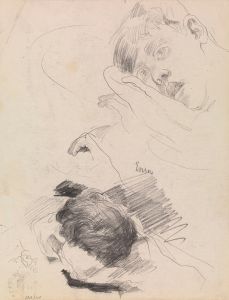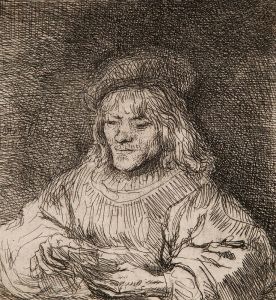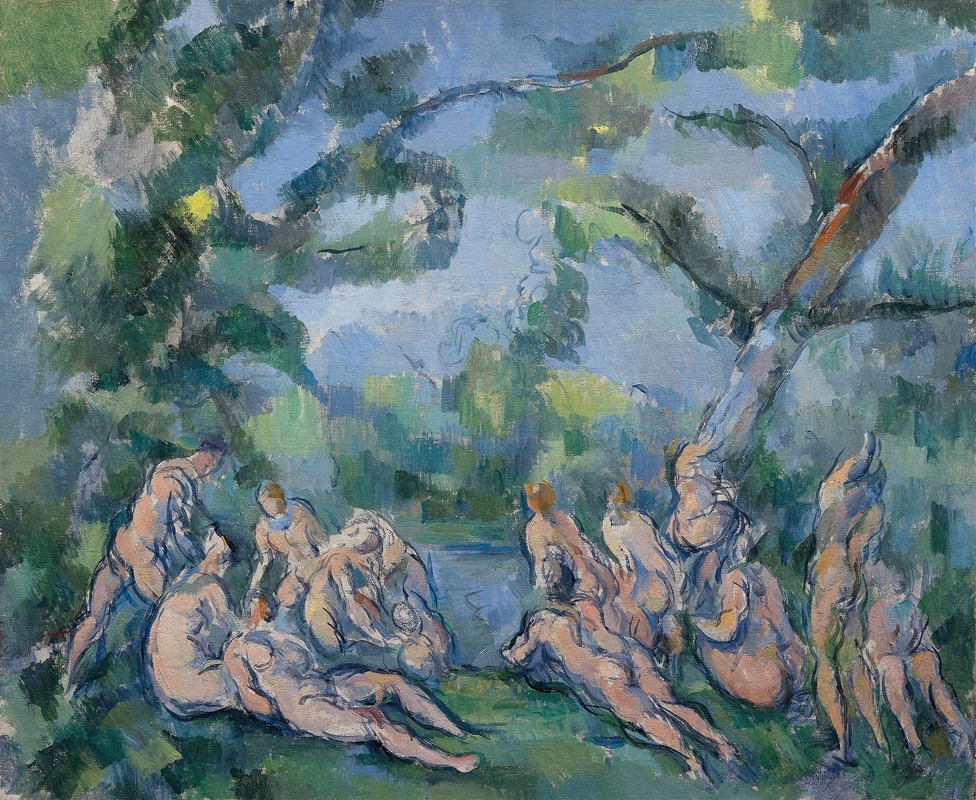
The Bathers
A hand-painted replica of Paul Cézanne’s masterpiece The Bathers, meticulously crafted by professional artists to capture the true essence of the original. Each piece is created with museum-quality canvas and rare mineral pigments, carefully painted by experienced artists with delicate brushstrokes and rich, layered colors to perfectly recreate the texture of the original artwork. Unlike machine-printed reproductions, this hand-painted version brings the painting to life, infused with the artist’s emotions and skill in every stroke. Whether for personal collection or home decoration, it instantly elevates the artistic atmosphere of any space.
"The Bathers" by Paul Cézanne is a series of paintings that mark a significant development in the history of art, showcasing the transition from 19th-century Impressionism to 20th-century modernism. Cézanne, a French Post-Impressionist painter, created several versions of "The Bathers" throughout his career, with the most famous being the large-scale works completed towards the end of his life.
Cézanne's exploration of the bather theme began in the 1870s and continued until his death in 1906. The most renowned of these works include "The Large Bathers" (Les Grandes Baigneuses), which is housed in the Philadelphia Museum of Art, and other significant versions located in the National Gallery, London, and the Barnes Foundation, Philadelphia. These paintings are characterized by their monumental scale, complex composition, and innovative use of color and form.
"The Large Bathers" in Philadelphia, completed between 1898 and 1905, is perhaps the most celebrated of Cézanne's bather series. This painting measures approximately 210.5 cm × 250.8 cm (82.9 in × 98.7 in) and depicts a group of nude figures in a landscape setting. Unlike the more naturalistic depictions of bathers by earlier artists, Cézanne's figures are more abstract and geometric, reflecting his interest in reducing natural forms to their underlying structures. The figures are arranged in a triangular composition, a technique that adds stability and harmony to the scene.
Cézanne's approach to the human form and landscape in "The Bathers" was revolutionary. He employed a technique known as "passage," where he allowed colors and shapes to blend into one another, creating a sense of depth and movement. This method broke away from the traditional linear perspective and foreshadowed the development of Cubism by artists like Pablo Picasso and Georges Braque. Cézanne's work on "The Bathers" is often seen as a bridge between Impressionism and the more abstract art movements of the 20th century.
Thematically, "The Bathers" reflects Cézanne's lifelong fascination with nature and the human figure. The integration of the figures with the landscape suggests a harmonious relationship between humanity and the natural world. This theme is consistent with Cézanne's broader artistic goals of capturing the essence of his subjects through careful observation and a deep understanding of form and color.
Cézanne's "The Bathers" series was not widely appreciated during his lifetime, as his style was considered unconventional compared to the more popular Impressionist works of his contemporaries. However, his innovative approach to composition and form eventually gained recognition and had a profound influence on the development of modern art. Artists such as Henri Matisse and Pablo Picasso acknowledged Cézanne's impact on their work, with Picasso famously referring to Cézanne as "the father of us all."
In summary, Paul Cézanne's "The Bathers" is a pivotal series in the history of art, representing a shift towards modernism and influencing generations of artists. Through his unique treatment of form, color, and composition, Cézanne challenged traditional artistic conventions and paved the way for new artistic movements in the 20th century.








